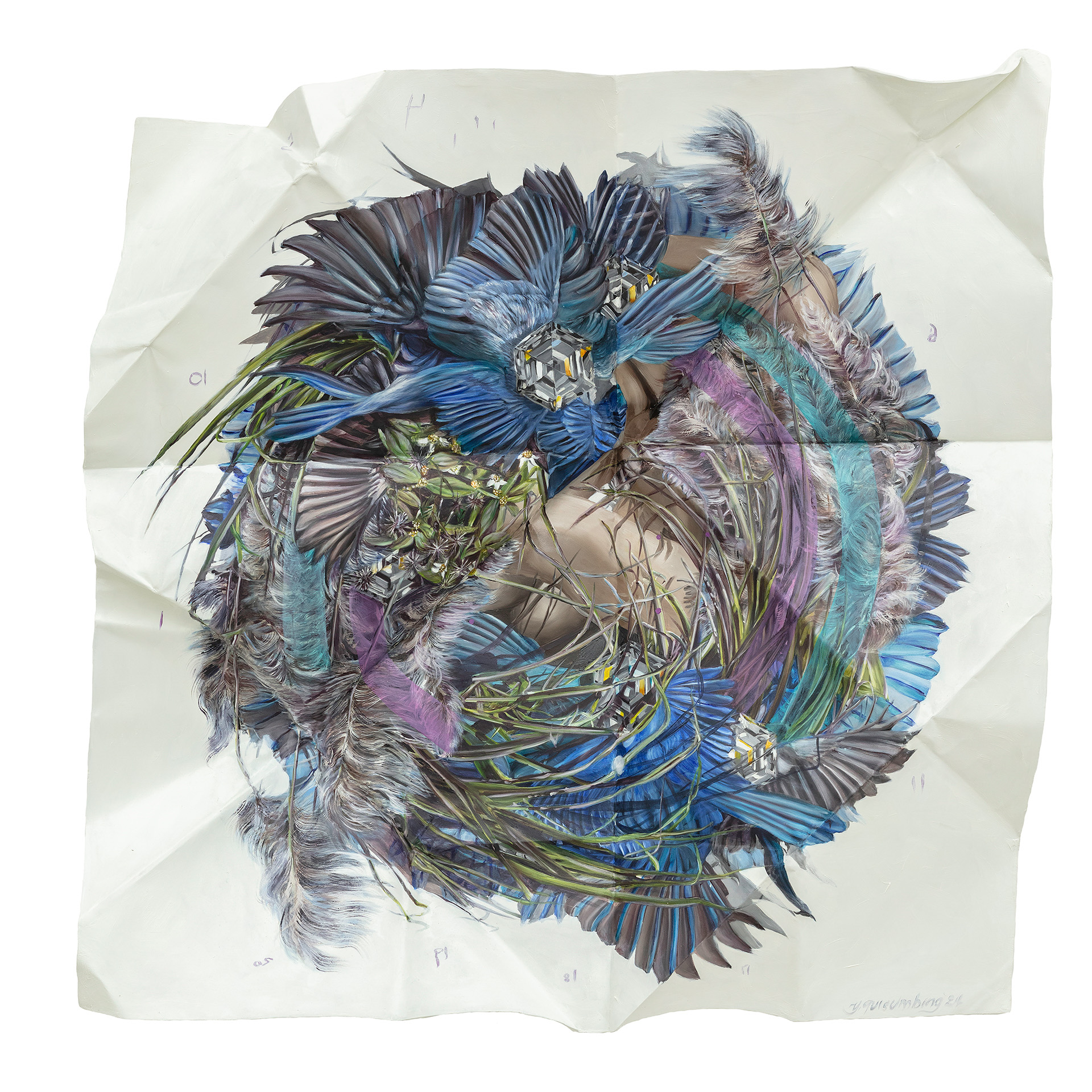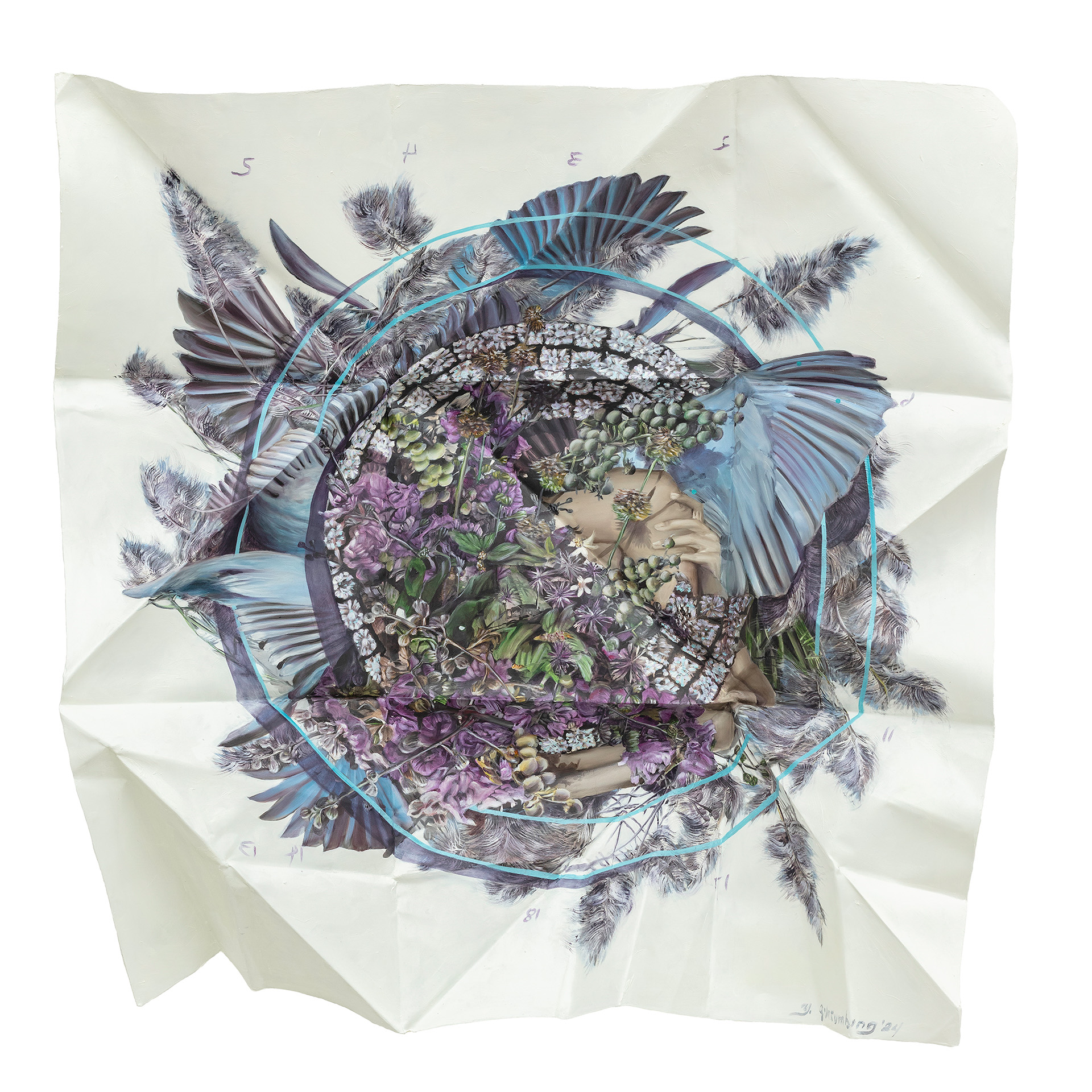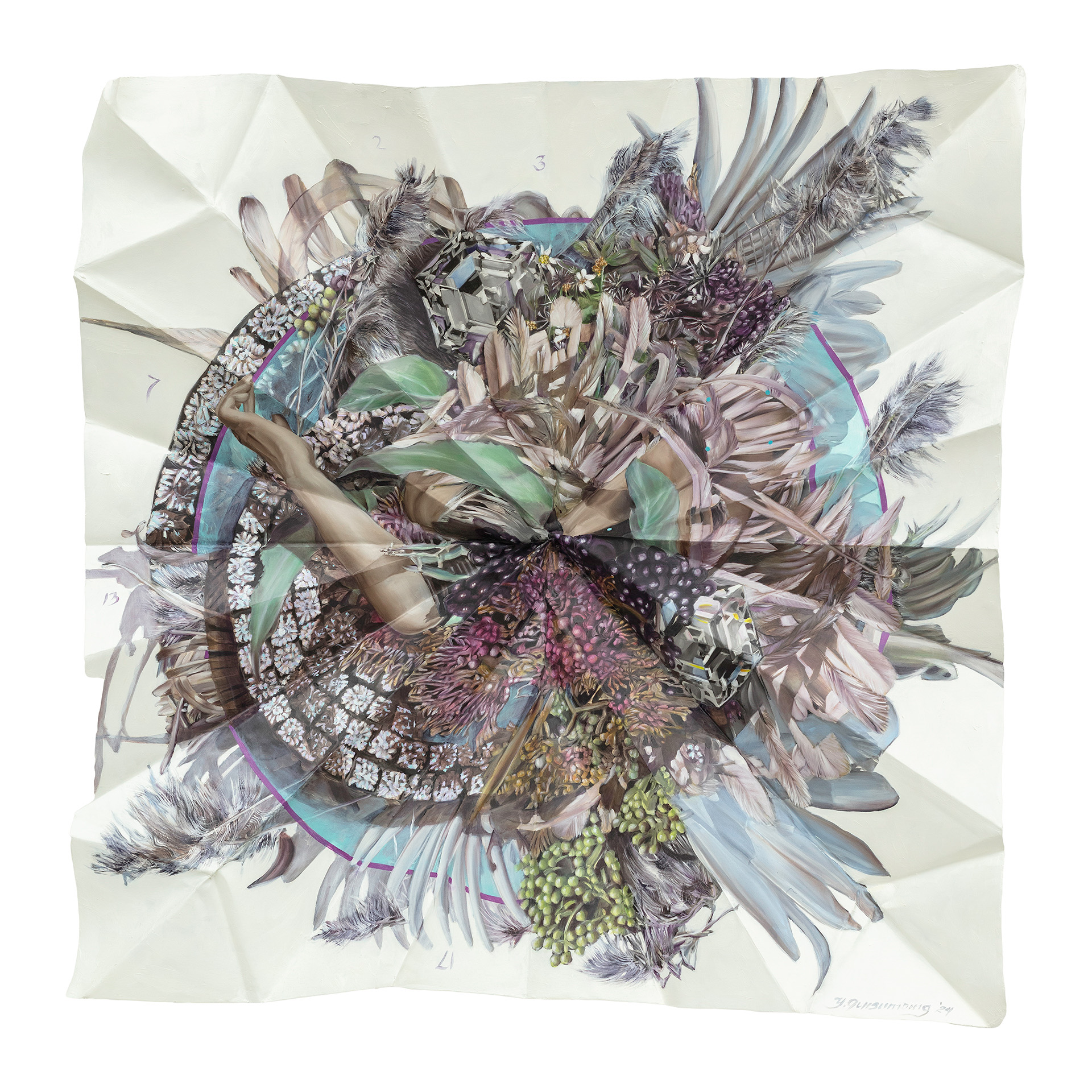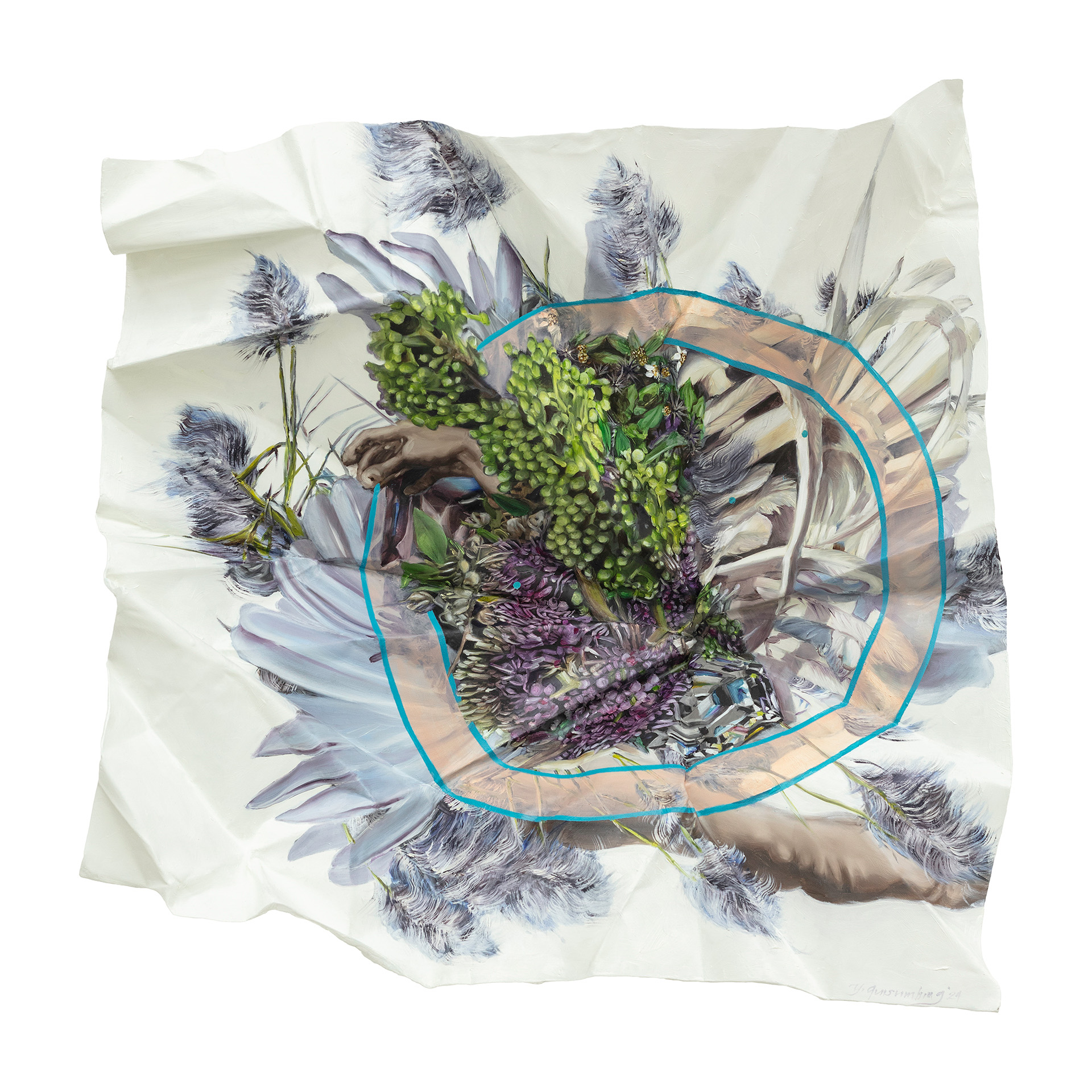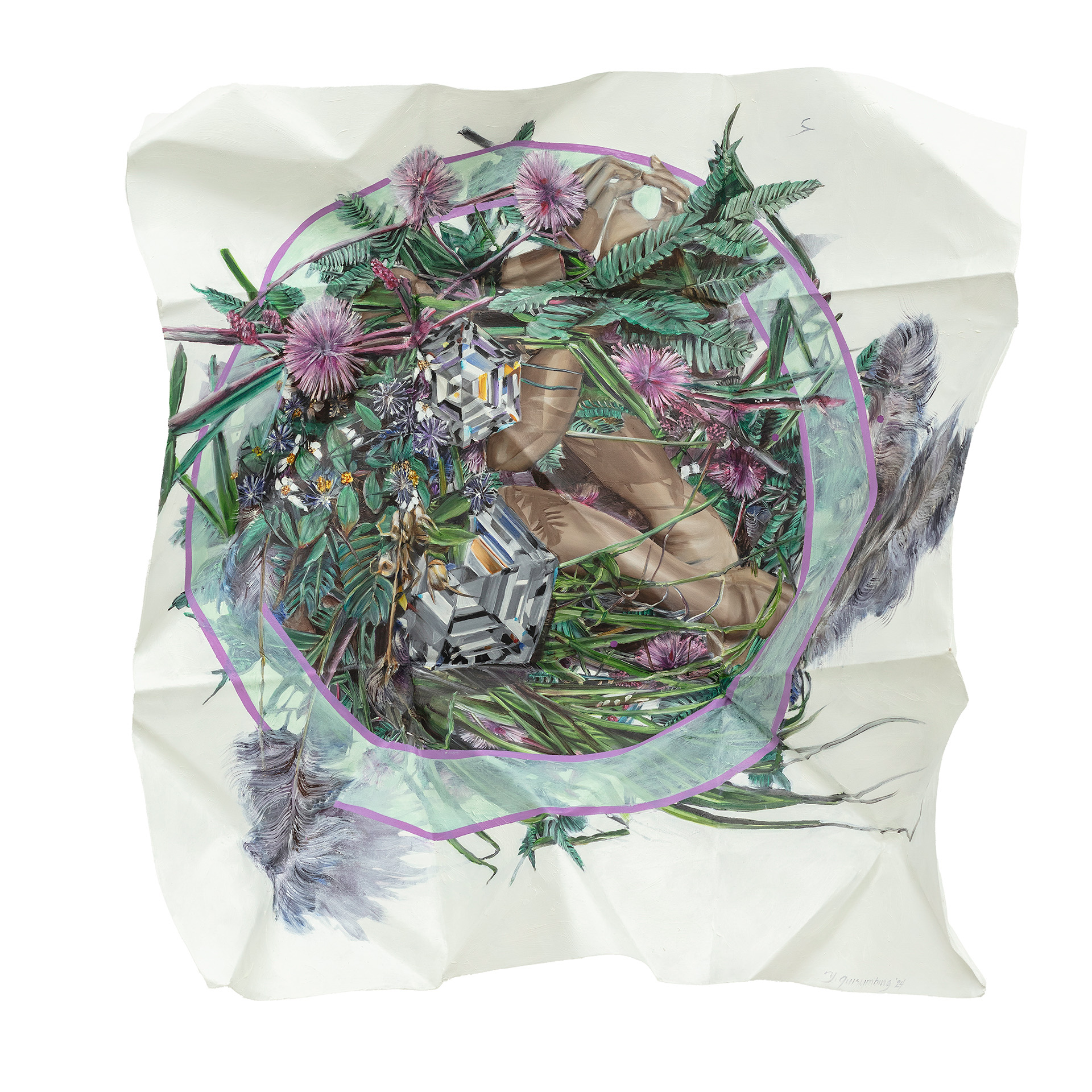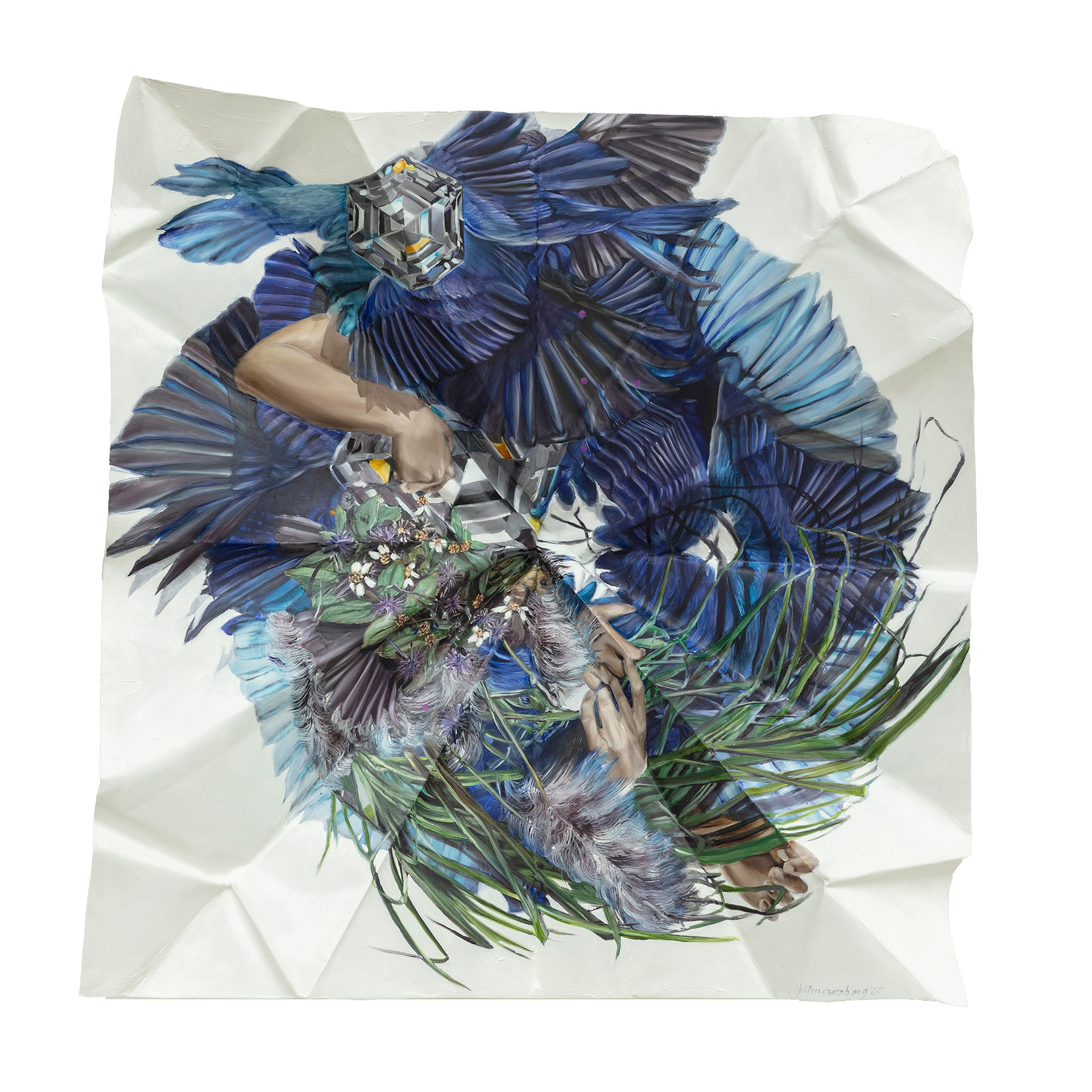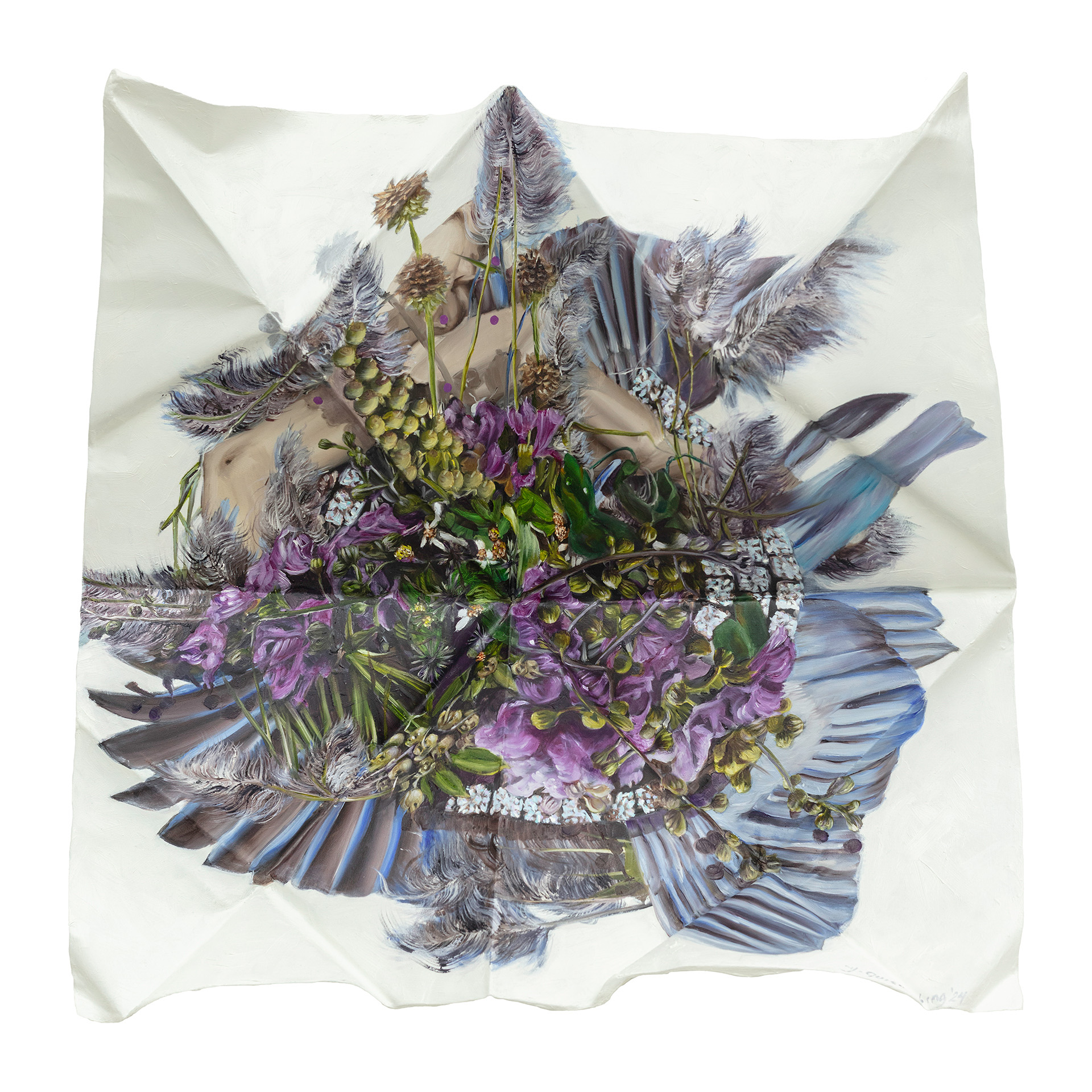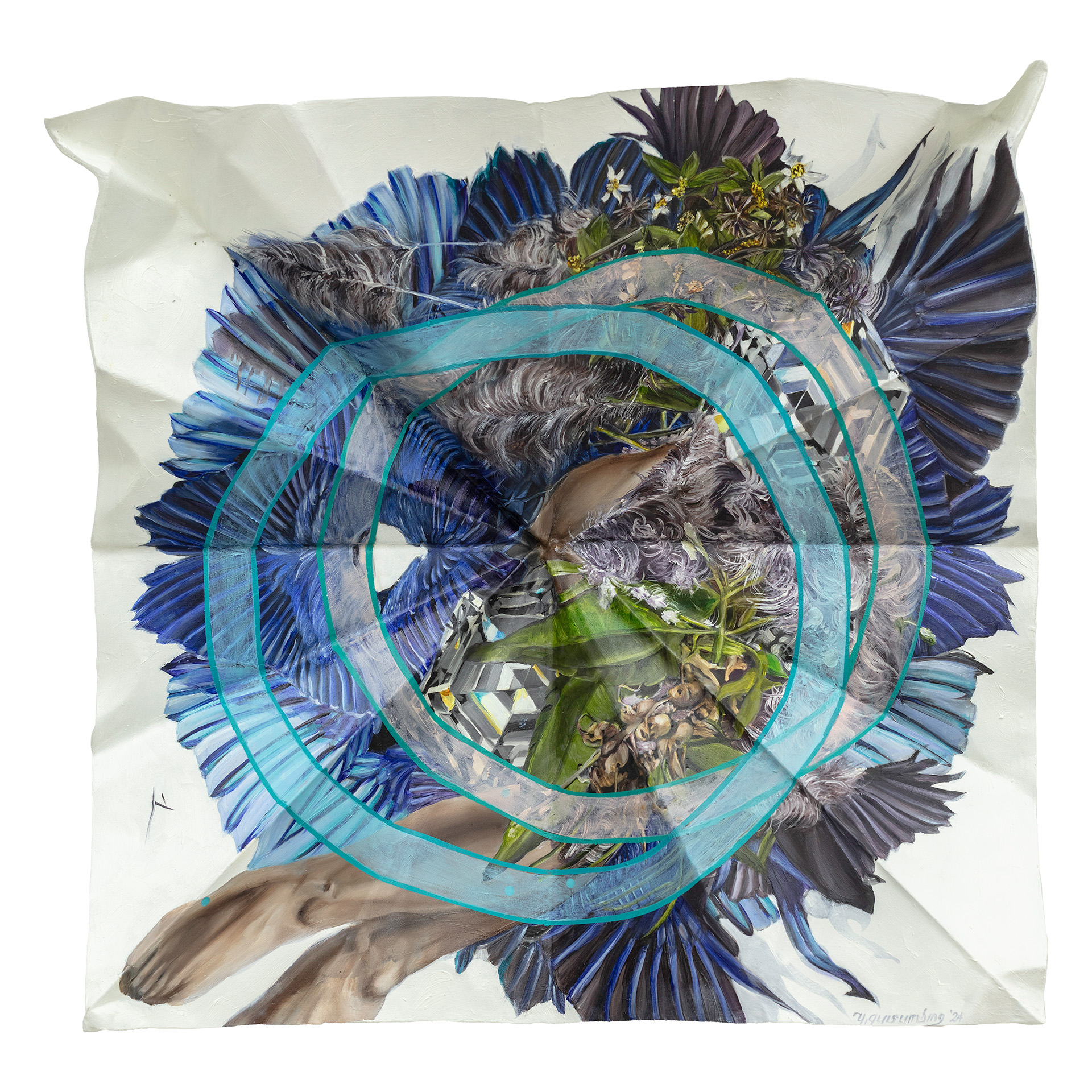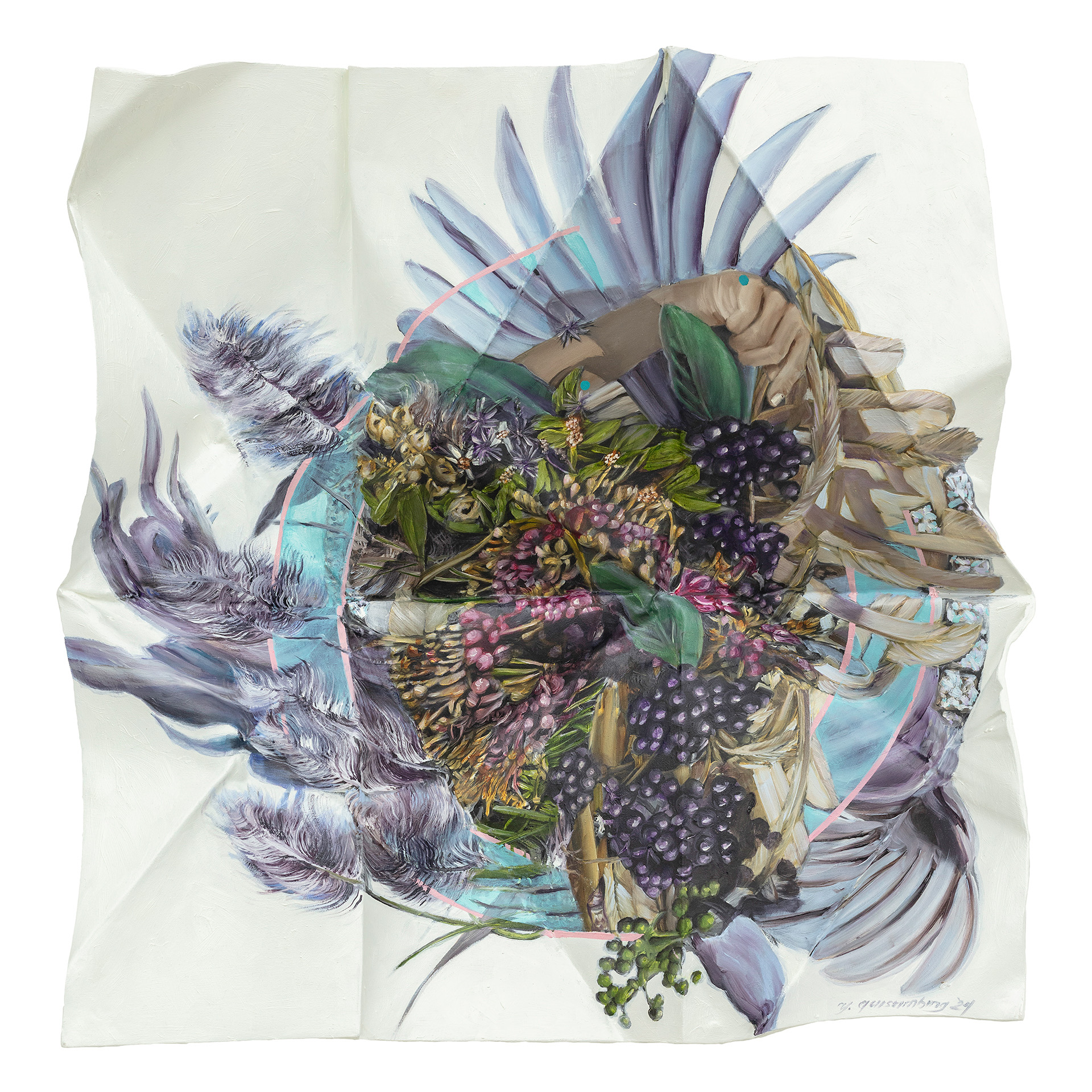
About
Two hours from Cebu City lies Barangay Lugo, home to farmland that the artist Yvonne Quisumbing calls her sanctuary. Here, she escapes from the blare of the city and welcomes, instead, the sounds of roosters and birds. She spends weekends and summers painting in a cottage-like studio. She gathers with mothers during fiestas and learns from them how to make dishes like puso. She watches her son, sporting a helmet with lights, chase spiders with his friends at night. Once in a while, she sees meteor showers, vivid against a pitch-black sky.
Lugo is the hometown of Quisumbing’s partner, who comes from a family of farmers. They have been planting sugarcane there since the 1960s — but today, their livelihood has become more precarious than ever. Two sugar mills in the area have closed, causing farmers to take costly, and at times dangerous, trips to Negros for milling. Sugarcane farmland in northern Cebu has dwindled by thousands of hectares.
Quisumbing’s solo show Sanctuary stemmed from a need for the artist to ease her anxieties about such a drastic change to a place that she has, for the past 15 years, called home. For the show, she builds on her Apothecary series, which explores Philippine medicinal plants. This time, Quisumbing features plants that are abundant on the farmland. People there ease their body aches by drinking tea brewed with tigaw leaves and roots. They tend to their wounds with a poultice made of crushed hagonoy leaves. They treat dengue by drinking tea made from a mangagaw plant that they boiled and strained.
These plants are, to Quisumbing, symbols of hope for the revitalization of the land. In her recent works, intricate, wreathe-like assemblages of these plants layer over — almost hide — slivers of the human form. A dexterous hand, a firm arm: these evoke the care and labor of farmers that are too often neglected and erased. Farmers who often cannot afford health care, relying instead on these plants to heal their bodies.
Together, the works in the show evoke the tension between the fragility and resilience of the land. Amid lush native plants, Quisumbing features one that does not grow in the Philippines, as it is unable to withstand the tropical climate: the snapdragon. Bright and striking in full bloom, its flowers’ petals shrivel into little skulls as they dry up. The plant serves as a kind of memento mori, alluding to the looming end of sugarcane farming in Lugo. The artist juxtaposes such symbolisms with a crucial motif: graceful, deep blue wings. They belong to the tikarol, a bird that the artist spots around the farmland. She noticed that the bird’s blue color is one of the few that can “resist the sun’s bleaching power”. To her, it has become symbolic of the perseverance of northern Cebu’s remaining farmers.
Sanctuary thus begins from a personal place, but ultimately goes beyond. The plight of the farmers in Lugo extends across the Philippines, as farmers bear the brunt of rising production costs and climate change. In the show, Quisumbing alludes to the uncertainty and vulnerability of their livelihoods. Yet, by grounding her works in Lugo and her personal memories, she lends the show a deeply human perspective—one that acknowledges that while the artist has an intimate connection to the land, she remains at a respectful distance from those who rely on it to survive. She does not claim to fully understand their plight, offering only glimpses of the reality that she can see and feel. She keeps her subjects’ faces hidden – a powerful reminder to viewers that the magnitude of their struggle and interior worlds ultimately escape our grasp.
Each work in the series is painted not on a flat surface but a sculptural form, resembling a creased piece of paper. Whenever Quisumbing embarks on a pilgrimage to pray, she writes down her petitions on paper. Her prayers are simple: She pleads that the land will continue to provide. She hopes that it will keep giving shelter to its people. She noticed that when she’s particularly anxious, she folds the paper compulsively.
These artworks are ultimately her prayers for Lugo: her anxieties and hopes melding in each crumpled sheet.
– Nicole Soriano
Yvonne Quisumbing’s (b.1975, Cebu, Philippines; lives and works in Cebu) Apothecary series—renderings and vignettes of Philippine medicinal plants as symbols of hope and well-being—has been the impetus for her work since 2019. In each of her pieces, she meditates upon the physical human condition and the factors that disrupt its equilibrium. She explores ailments or states of mind and body with depictions of native herbs as symbols and allegories to illustrate her inquiries.
With her 20-year discipline in design and as a patternmaker and seamstress, she applies to her paintings’ substrates the sculptural dimensionality borne from her sartorial background. She reshapes or molds industrial materials like aluminum and fiber glass, and meticulously paints renditions of her subject matter onto these surfaces. Recurring motifs of clothing and masks as veils of stirrings and subcurrents have been the basis of her work since her f irst solo show in 2005.
Quisumbing earned her Master of Fine Arts degree from the University of Santo Tomas. Born in Cebu, she established her studio amid farmland in barangay Lugo in Borbon, Cebu - a two-hour drive north of Cebu City. Lugo is currently a sanctuary for birds as well as for Quisumbing: a direct relief from the congested city where thoughts and ideas come in better clarity, away from the constant chatter and blaring traffic.
Installation Views
Works
